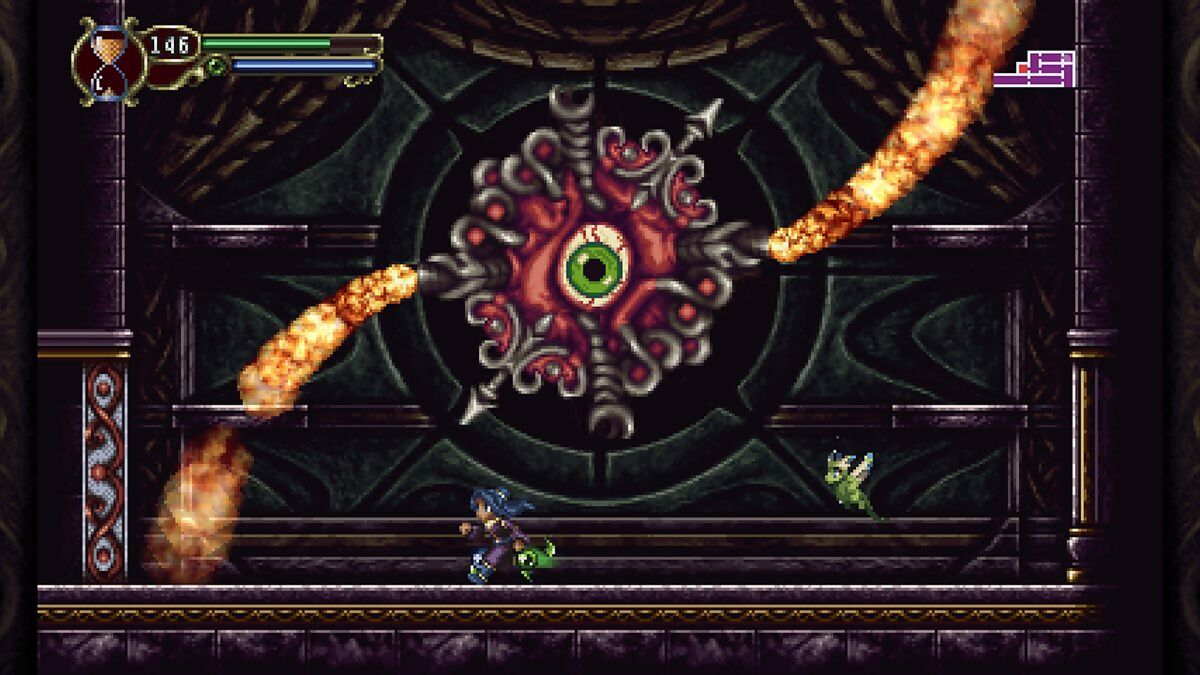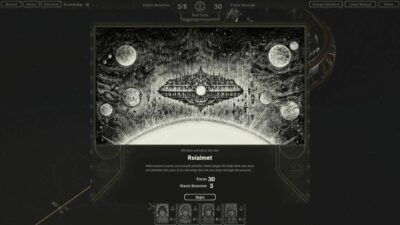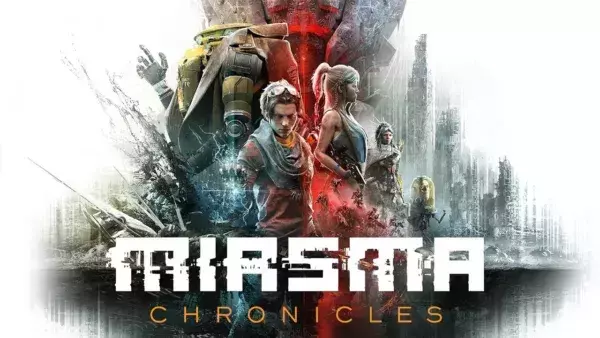
The pixel art shines in the flawed yet charming Castlevania tribute, Timespinner.
Some games become so embedded in the cultural psyche that they come to define entire genres. Back in the 1990s, first-person shooters were popularly known as ‘Doom clones’. Over time this definition has faded, but one portmanteau in particular shows how two games have not only defined but dominated their genre: ‘Metroidvania’.
It’s a term now commonly applied to 2D platformers that require exploration and the acquisition of new powers to unlock new areas; Ori and the Blind Forest and Axiom Verge are but two games inspired by the template set by Metroid and Castlevania.
Indie newcomer Timespinner, meanwhile, takes huge dollops of influence from Konami’s 1997 classic, Castlevania: Symphony of the Night – a Metroidvania widely regarded as one of the best of its kind.
You take on the role of apprentice timespinner Lunais, who, after seeing her mother and entire village wiped out by the fascist Lachiem empire, is hurled back in time on a mission of vengeance. As you progress further, you must travel between two time periods and learn more about the history of your enemy so you can change the past and fix your future.
Having smashed its Kickstarter target way back in 2014, Timespinner has taken a while to get here, but it’s certainly been time well spent. We aren’t short of indie games with pixel art of late, but rarely have we seen one done this well and this lovingly. The wonderful soundtrack really complements the visuals, too, and you really get a sense that a lot of care went into Timespinner’s presentation.
A similar amount of effort has also been put into the game feel. Lunais’s movement is precise and smooth, and she has the handy ability to grab onto ledges and pull herself up for those jumps she didn’t quite make.
But Timespinner’s main gimmick is Lunais’s ability to freeze time, which has two very different uses here. Primarily, you’ll be using it to avoid damage by certain boss attacks, but it also has the handy function of turning enemies into platforms which allow you to reach higher levels and various bonus items.
Like its spiritual father Symphony of the Night, Timespinner is a mix of classic platform gaming and RPG elements. The more enemies you kill, the more experience you earn and the higher the level you’ll reach. Familiars are another mechanic that Timespinner borrows from that Castlevania standard – they’re floating companions who’ll assist you by either attacking enemies or regularly healing small amounts of damage.
Timespinner also has an interesting approach to combat. Rather than finding and equipping just one weapon, Lunais fights back with two orbs constantly rotating around her. Starting with a basic pair of blue orbs, you can collect other types that transform into swords, lightning, and guns.
What’s really nifty is that you have the ability to mix and match orbs to find which combination works best for your style of play. You can augment your attacks with various types of effects to cause even further damage, though once you’ve found what works for you, there’s not much reason to experiment with other combinations.
Developer Lunar Ray wears its influences on its sleeve, and why not? There’s certainly nothing wrong with following in the footsteps of a genre-defining classic. It’s arguable, though, that Timespinner is so immersed in those Castlevania influences that it sometimes struggles to find its own personality: the characters look pretty, as two-dimensional as their sprites; the storyline, by the same token, is familiar, time-worn stuff.
Some uninspired level design also conspires to make Timespinner’s universe feel small – it’s neither expansive enough to make you want to explore, like Symphony of the Night, nor intricate enough to constantly surprise like Super Metroid. Really, its structure harks back even further than those classics to vintage games like Wonder Boy in Monster Land.
There are some issues with the game’s flow here, too. The first couple of hours are way too hard, with enemies taking too many hits to kill and Lunais taking a glaringly long time to level up. Some objectives can also be a little vague as to where you’re meant to go next, or simply require you to move to and fro between locations you’ve already visited. The experience improves vastly after the initial struggle, but Timespinner will likely feel unwelcoming to players new to the genre.
Despite all this, Timespinner remains a solid, entertaining example of its genre – and really, Lunar Ray is the victim of timing here. Metroidvania is a crowded genre of late, with the likes of Hollow Knight and Dead Cells being two recent, superb examples.
If you’re looking for another perfectly capable action-platformer, though, Timespinner offers a perfectly enjoyable trip back to a bygone age of console gaming.
Highlight
Fittingly enough for a game about time travel, Timespinner literally transports you back to the late 1990s in look and feel. Resembling a lost SNES classic, it’s clear that a lot of work was put into setting every pixel in just the right place.
Verdict: 72%
Timespinner is a well-crafted entry in an overcrowded genre. It’s solid, but fails to break new ground.
Info
Genre: Action RPG
Format: PC / Mac / Linux / PS4 / PS Vita
Developer: Lunar Ray Games
Publisher: Chucklefish
Price: £14.99
Release: Out now





